
For me, no trip to Southern California is complete without immersing myself in filmmaking history. On my first visit to Los Angeles, I tried to fit in as many studio tours as possible, just to be able to walk in the footsteps of some of my favorite stars. The tour at Warner Brothers, in particular, caught my attention as there was a tour specifically focused upon classic cinema. While they did deviate from the classics on a few occasions to show off the more modern stops on the tour that tourists usually prefer, I was all the more excited to explore the studio’s storied past and to personally see different artifacts connected to Hollywood’s Golden Age and its iconic stars. This article focuses upon the history of classic cinema and how it is highlighted in the current Warner Bros Classic Tour.
Upon going through security, I waited in a lovely gathering place as several other visitors and I waited for our tour groups to assemble. The visitor’s area has a Warner-themed coffee shop in addition to a fine display that showcases they studios history and major films. Being of Polish descent, I was also excited to see the word “welcome” in many different languages upon my entrance, including a Polish translation. I thought this was a nice nod to the Warner family history, as three of the four founding Warners were born in Poland.
Once the tour group had assembled, we were led into a theater and shown a film depicting the history of the studio. The film prefacing the tour offered strong contextual information about the studio, its impact upon the industry, and its legacy today. Prior to heading out in our movie touring car, we chatted with our tour group members, received our tour badges, and toasted the studio with complimentary champagne.
As we got started on our tour, we were taken through many different sets that were grouped into themes. For example, the studio has a section that is meant to look like small-town USA, another to portray New York, others for Chicago, and so many more. Of course, since the studio is quite active, some locations were not able to be visited due to the need for “quiet on the set” and for the studio work to continue on without interruption. As a result, each tour will vary to a degree.
While making our way through the studio, I highly enjoyed picking out the different sets and connecting them to different films I had seen over the years. It is fascinating to see how malleable the sets can be to fit the needs of a given film but certain elements of the facades remain consistent. Here are a few connections, classic and modern, that I was able to make on the tour:
Casablanca (1942):
East of Eden (1955):
The Music Man (1962):
La La Land (2016):
As we visited the different sets, we learned about the different film in which they appeared. We also were able to stop inside of some of them to get a sense of how filming inside and outside of these venues worked. It was also interesting to touch some of them, as parts of the building were brick whereas others were rubbery.
While movie soundstages may not be as thrilling for some people, I enjoy passing them and learning about which films were shot in them. Though we did not enter the soundstages, each of them was labeled with a plaque that listed some of the major productions that were housed in them.
Here is the history behind the studio soundstages I passed and photographed on the tour:

Stage 1:
Stage 1 was built in 1936. Some of the films shot here include:
- Now, Voyager (1942)
- Yankee Doodle Dandy (1942)
- Princess O’Rourke (1943)
- This is the Army (1943)
- Mildred Pierce (1945)
- The Treasure of Sierra Madre (1948)
- Strangers on a Train (1951)
- Calamity Jane (1953)
- A Star is Born (1954)
- Them! (1954)
- The Lone Ranger (1956)
- Ocean’s Eleven (1960)

Stage 6:
Stage 6 was built in 1927. Some of the films shot here include:
- 42nd Street (1933)
- Gold Diggers of 1935 (1935)
- The Petrified Forest (1938)
- Angels with Dirty Faces (1938)
- Arsenic and Old Lace (1941)
- The Maltese Falcon (1941)
- Sergeant York (1941)
- Now, Voyager (1942)
- They Died With Their Boots On (1942)
- Yankee Doodle Dandy (1942)
- Watch on the Rhine (1943)
- The Treasure of Sierra Madre (1948)
- Them! (1954)
- Sayonara (1957)
- The Spirit of St. Louis (1957)
- Auntie Mame (1958)
- Damn Yankees (1958)
- A Summer Place (1959)

Stage 11:
Stage 11 was constructed in 1926. Some of the films shot here include:
- 42nd Street (1933)
- Dangerous (1935)
- A Midsummer Night’s Dream (1935)
- The Adventures of Robin Hood (1938)
- Kings Road (1942)
- Now, Voyager (1942)
- Yankee Doodle Dandy (1942)
- This is the Army (1943)
- Watch on the Rhine (1943)
- Mildred Pierce (1945)
- White Heat (1949)
- A Star Is Born (1954)
- Pajama Game (1957)
- Sayonara (1957)
- Auntie Mame (1958)
- Damn Yankees (1958)
- A Summer Place (1958)
- Ocean’s Eleven (1960)
Stage 15:
Stage 15 was constructed in 1927. Some of the films shot here include:
- Gold Diggers of 1935 (1935)
- Anthony Adverse (1936)
- The Petrified Forest (1936)
- Mildred Pierce (1945)
- The Big Sleep (1946)
- Strangers on a Train (1951)
- Calamity Jane (1953)
- House of Wax (1953)
- Mr. Roberts (1955)
- Damn Yankees (1958)
- The Old Man and the Sea (1958)
Stage 16:
Stage 16 was built in 1935/36 and was formerly known as Stage 7. One of the tallest stages in the world, Stage 16 was raised foot by foot in 1935 to its current height of 98 feet for the Marion Davies and Clark Gable film Cain and Mabel (1936). Some of the films shot here include:
- Gold Diggers of 1935 (1935)
- The Charge of the Light Brigade (1936)
- The Private Lives of Elizabeth and Essex (1939)
- Sergeant York (1941)
- Yankee Doodle Dandy (1942)
- The Big Sleep (1946)
- The Adventures of Don Juan (1949)
- The Old Man and the Sea (1959)
- A Summer Place (1959)

Stage 20:
Stage 20 was constructed 1935. Some of the films shot here include:
- The Roaring Twenties (1939)
- They Drive By Night (1940)
- Now, Voyager (1942)
- This Is The Army (1943)
- Watch On The Rhine (1943)
- The Big Sleep (1946)
- Johnny Belinda (1946)
- A Star Is Born (1954)
- Mister Roberts (1955)
- Auntie Mame (1958)
- The Old Man And The Sea (1958)

Stage 24:
Stage 24 was constructed 1935. Some of the films shot here include:
- The Roaring Twenties (1939)
- The Letter (1940)
- Sergeant York (1941)
- Now, Voyager (1942)
- This Is The Army (1943)
- Watch on the Rhine (1943)
- Mildred Pierce (1945)
- The Big Sleep (1946)
- Johnny Belinda (1948)
- Calamity Jane (1953)
- A Star Is Born (1954)
- Sayonara (1957)
- The Spirit of St. Louis (1957)
- Damn Yankees (1958)

Stage 25:
Stage 25 was constructed 1935. Some of the films shot here include:
- The Charge of the Light Brigade (1936)
- The Adventures of Robin Hood (1938)
- Knute Rockne: All American (1940)
- High Sierra (1941)
- Kings Row (1942)
- Now, Voyager (1942)
- Yankee Doodle Dandy (1942)
- Princess O’Rourke (1943)
- Auntie Mame (1958)
While on the tour, we also happened to pass by other buildings of interest, including Bette Davis’s dressing room and Jack Warner’s office.
The soundstages were not the only connections to classic films and performers. A particularly humbling moment on the tour included a stop at the stately World War II Memorial, honoring the various Warner Bros talents who also happened to serve in the war.
Another exciting stop on the tour included a visit to the studio prop house. Containing a vast amount of film props that are each labeled and organized carefully, it is a fascinating sight to behold.
Of the many different props here, these stood out as my favorites:
The Casablanca globe used in publicity shots.
A Casablanca piano.
The Maltese falcons.
The prop house continues to be active today to meet the needs of current film and television productions.
As an archivist and film historian, I am especially excited to encounter costumes and other artifacts that were crucial to the production of classic films. I think that much can be gained from studying these items in their original material form and that working with these pieces can be a moving experience. The last stop on the tour was a museum, which showcased many of these incredible pieces.
The collection included costumes from the following films:
Casablanca (1942):
Rebel Without a Cause (1955):
My Fair Lady (1964):
In addition, the collection also profiled costumes worn by different actors and actresses aside from grouping them into one particular film.
Some of the actresses featured included:
Olivia de Havilland,
Joan Crawford,
and Lauren Bacall.
As for actors, some costumes worn by James Cagney and Edward G. Robinson were also displayed.
As with the prop house, this museum area also has a sizable amount of film history on display. There are a wide range of props and costume pieces here, in addition to awards that commemorate the achievements of the studio and its talents.
Of course, I had a few favorite items in the collection that I was especially honored to see. Among them were:
Jack Warner’s phone and phone book
and a microphone used on the set of the first feature-length motion picture with not only a synchronized recorded music score but also lip-synchronous singing and speech–The Jazz Singer (1927).
By the time I finished my tour, it was evening. I managed to glimpse the Warner Bros tower on my way out, all lit up for the night.
Overall, I think that the Warner Bros Classic Tour is the best of the bunch for fans of classic cinema. In addition to all of the history encountered here, the guides do a fine job of connecting with their tour attendees individually and learning about which classic stars or classic films are the most interesting to them. My guide asked each one of us about this and did his best to incorporate these points of interest into the tour. For the record, I mentioned that I loved the Busby Berkeley production unit and the Gold Digger films, and the various soundstages in which Berkeley worked were pointed out to me as we passed them on the tour.
I appreciate their efforts to make this tour meaningful to every attendee and highly recommend partaking in this tour offering.



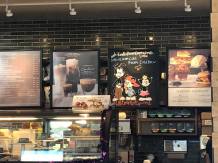






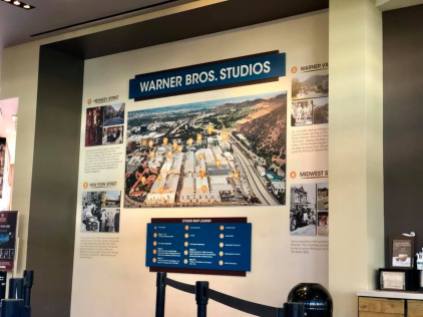

































































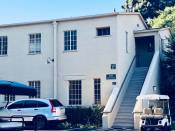


























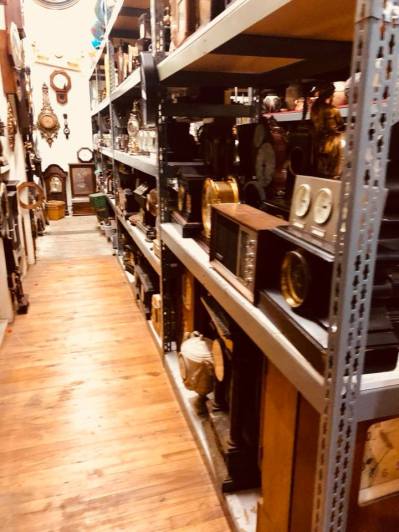















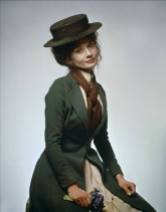


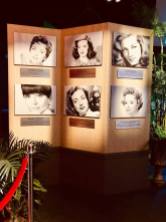



































Loved this! Thank you for all the photos, and I hope to take this tour someday. Noticed in the phone book – Salvador Dali!!!!
It’s an epic phone book!
Pingback: Classic Movie Travels: Dorothy Dare | Classic Movie Hub Blog
Pingback: Dorothy Dare | Hometowns to Hollywood
Pingback: Ann Sheridan | Hometowns to Hollywood
Pingback: Humphrey Bogart | Hometowns to Hollywood
Pingback: Ruby Keeler | Hometowns to Hollywood
Thank you Annette for the terrific tour of Warner Brothers studio and all the great photos
Pingback: Richard Glazier: From Broadway to Hollywood | Hometowns to Hollywood
Pingback: The Singing Marine (1937) | Hometowns to Hollywood
Pingback: Rin Tin Tin | Hometowns to Hollywood
Pingback: Happiness Ahead (1934) | Hometowns to Hollywood